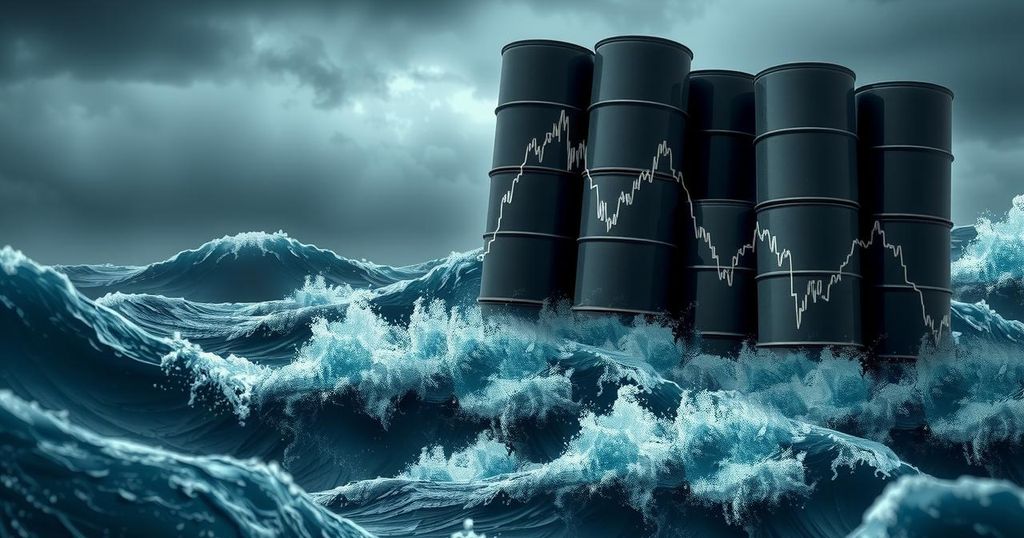Impact of Trump’s Tariffs on Russia’s Economy and Oil Revenues

Trump’s “Liberation Day” tariffs have caused a significant drop in oil prices, affecting Russia’s economy indirectly. Despite not targeting Russia directly, the tariffs contribute to global economic uncertainty and lower oil demand, which Russia heavily depends on for funding its war in Ukraine. Analysts suggest that continued low prices could push Russia towards seeking a ceasefire.
On April 7, 2023, President Donald Trump’s “Liberation Day” tariffs inadvertently affected Russia’s economy by causing a significant decline in oil prices, which are critical to Russia’s budget and war efforts in Ukraine. With oil revenues constituting approximately 30% of its total state budget, a decrease in prices could hinder Russia’s ability to sustain military spending. Despite expressing frustration towards the Kremlin, Trump has yet to take direct actions against Russia’s aggression.
The Kremlin’s military budget was based on an anticipated oil price of $70 per barrel. However, the price of Russian Urals oil fell to $51.54, its lowest in 21 months, complicating Russia’s financial situation. Energy analyst Wojciech Jakobik emphasized that if prices remain below projections, Russia would struggle to cover its increased defense expenditures and could be forced to pursue a ceasefire sooner.
The drop in oil prices is attributed to multiple factors. While Ukraine has targeted Russian oil assets using drones, Trump’s tariffs have escalated global economic uncertainty, causing fears of a recession that led to lower oil demand. Despite being exempt from Trump’s tariffs, Russia faces economic ripple effects from the global trade war, igniting panic in Moscow.
Kremlin spokesman Dmitry Peskov acknowledged the challenging economic environment, blaming the price fall on Trump’s tariffs while also recognizing pre-existing declines attributed to sanctions and decreased demand from Russia’s primary markets, China and India. Additionally, OPEC+ has recently increased oil production, which could further saturate the market and depress prices, worsening Russia’s financial outlook.
As Russia grapples with lowered energy revenues, balancing social spending, national defense, and economic stability becomes increasingly precarious. Although sanctions have not yet decimated the Russian economy due to its significant oil revenues, continued low prices could result in cuts to social programs or a faster shift towards seeking a truce with Ukraine.
Looking forward, analysts predict that Brent crude prices may not recover, with Goldman Sachs projecting prices as low as $62 per barrel by December 2025. With OPEC+ increasing production, the risk remains that prices could fall even further, creating conditions detrimental to Russia’s economy and potentially leading to another price war.
To summarize, the interplay between Trump’s tariffs, global market dynamics, and Russia’s reliance on oil revenue creates a complex and unstable economic landscape for the Kremlin. The potential consequences of this situation could push Russia to reevaluate its military actions in Ukraine. Without changes to U.S. tariffs, recovery in the oil market appears unlikely, potentially mirroring past economic crises.
In conclusion, while Trump’s tariffs were not directly imposed on Russia, the resultant decline in oil prices is causing significant challenges for the Russian economy, which is heavily reliant on oil revenues. With ongoing military expenditures and pressure from sanctions, Russia could face increased instability and the necessity to consider negotiating a ceasefire in Ukraine, especially if oil prices remain low.
Original Source: kyivindependent.com







